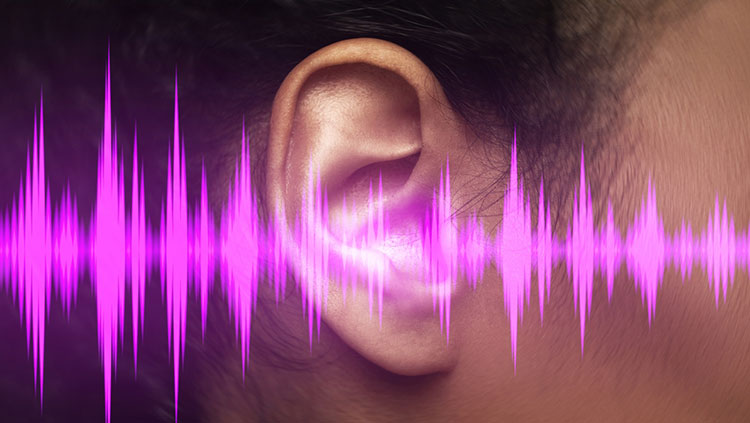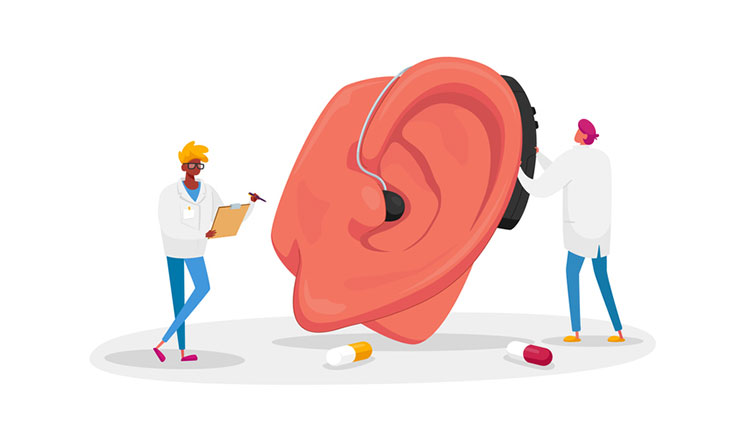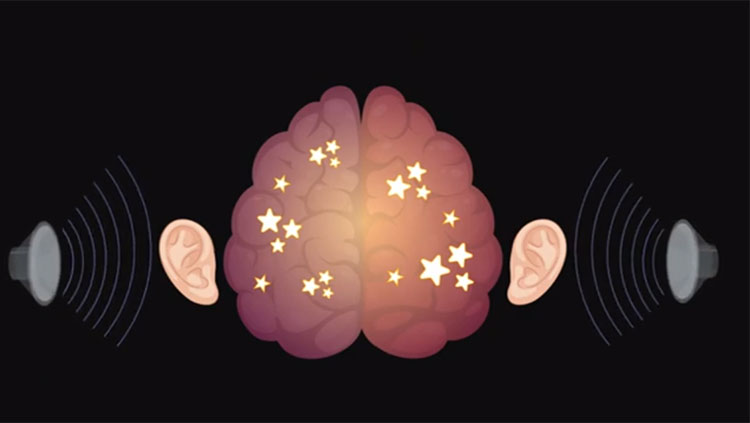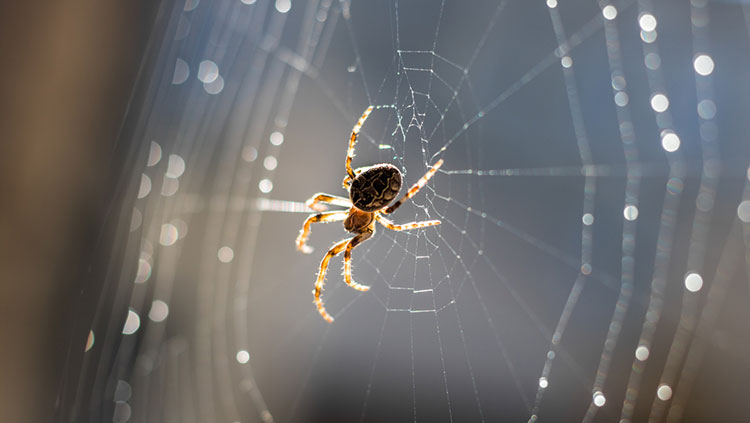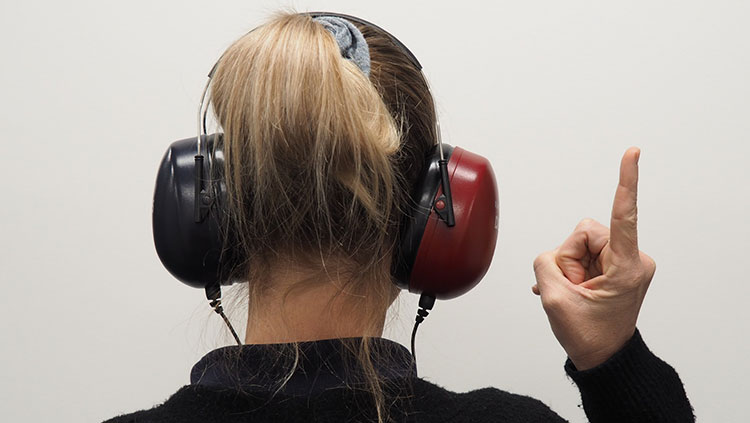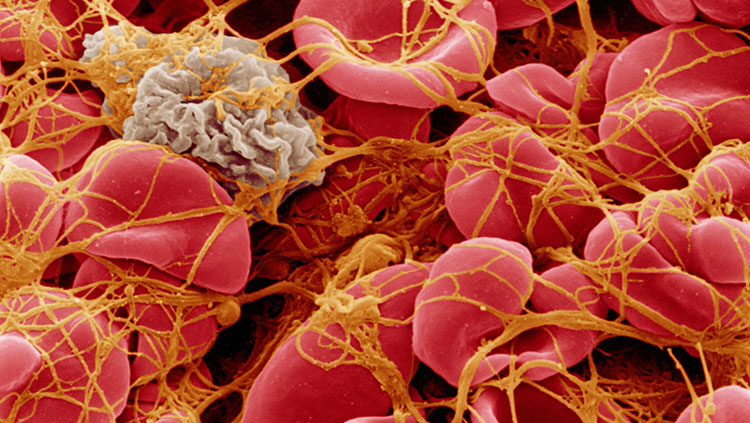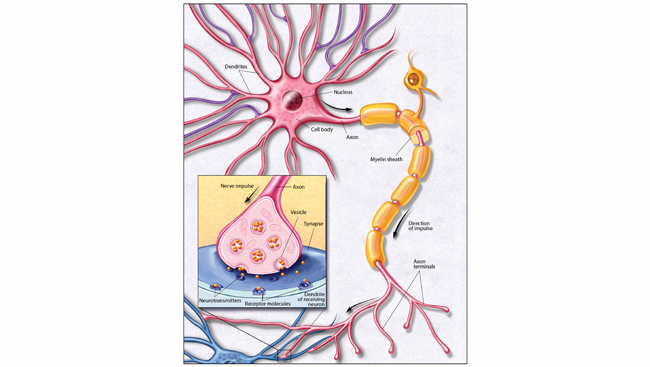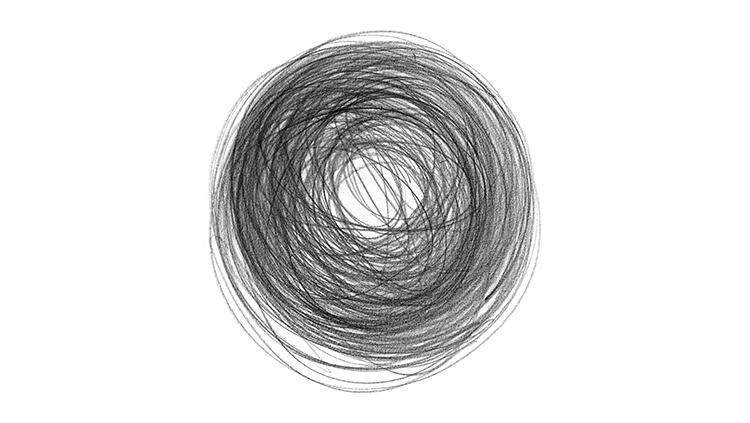Good Vibrations
- Published31 Aug 2015
- Reviewed31 Aug 2015
- Author Alexis Wnuk
- Source BrainFacts/SfN
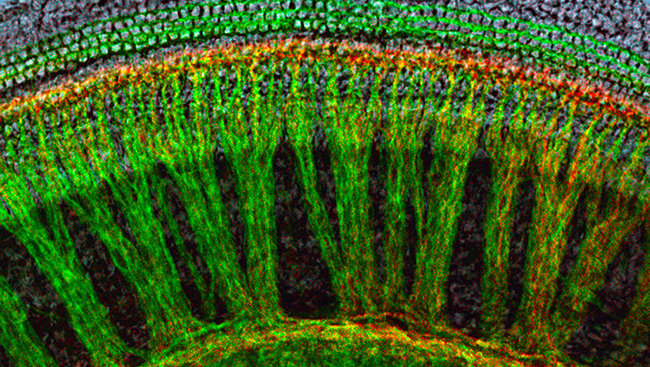
Our ability to hear depends on the sensory organs of the inner ear, including a snail-shaped structure called the cochlea. It contains sensory cells — called hair cells — that sense vibrations in the air and send electrical signals to the brain, allowing us to perceive sound. This image shows the cochlea of a neonatal mouse, with hair cells in red. Scientists have found that signals from brainstem nerve fibers (green) are important for the normal development and function of hair cells.
CONTENT PROVIDED BY
BrainFacts/SfN



